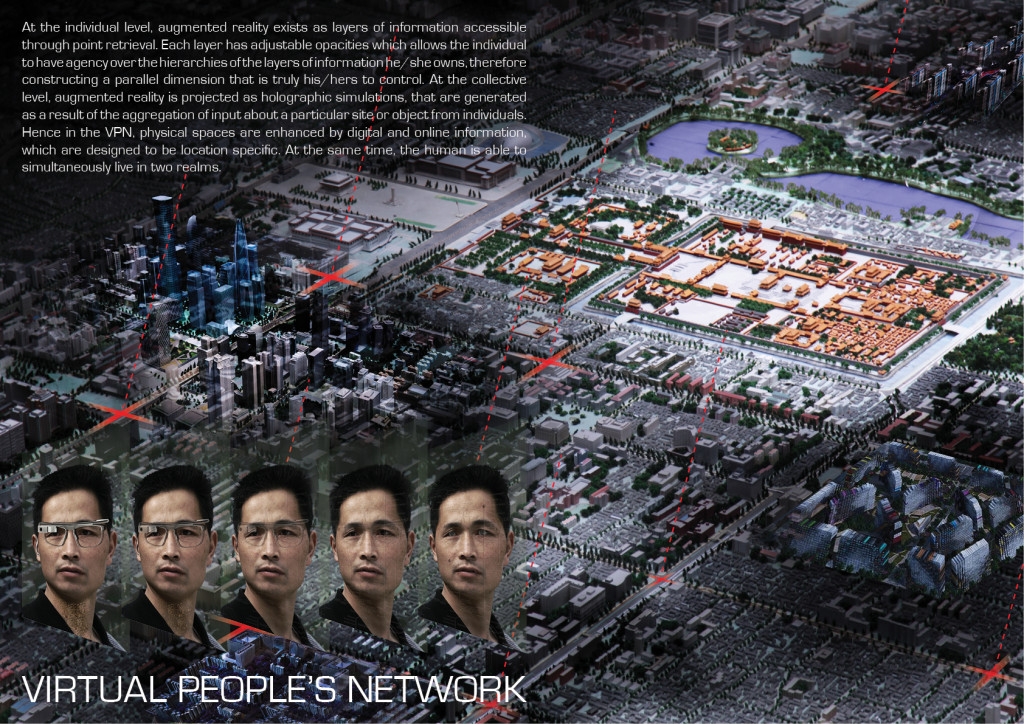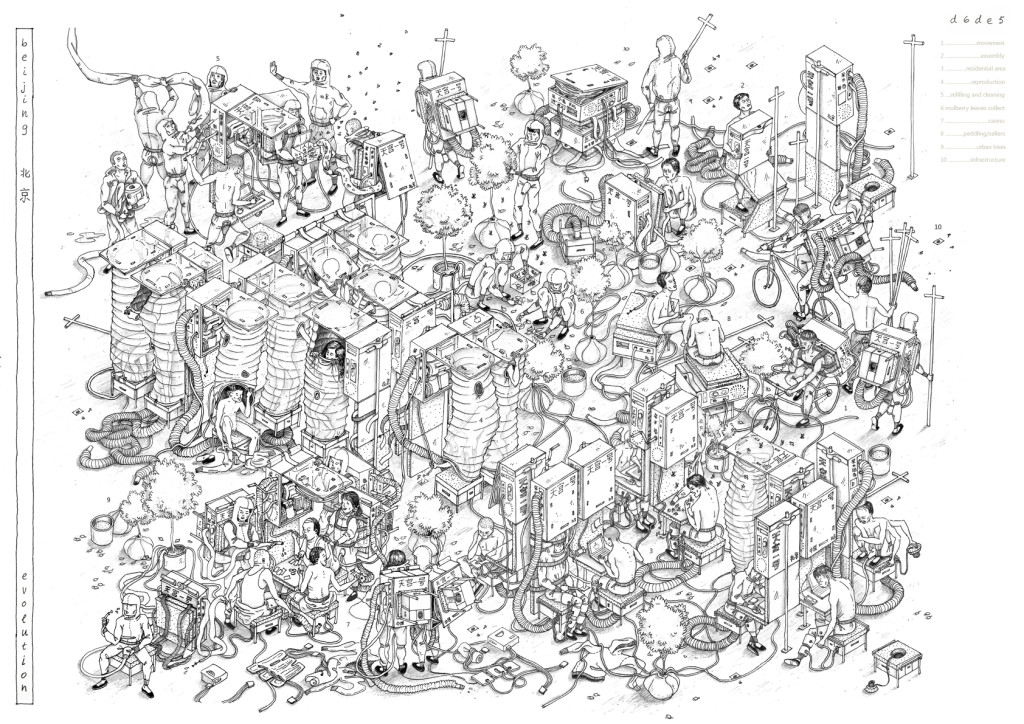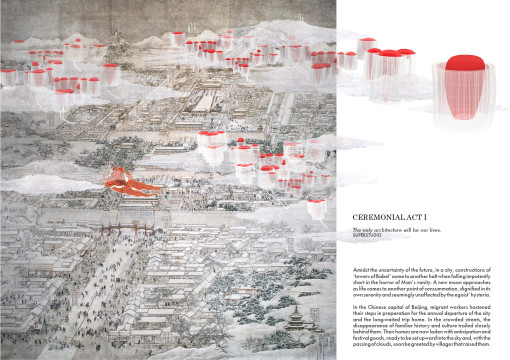Info:
Title: Ceremonial Act I - Code: c1c40Contest: Beijing / 2014
By: Xiaorui Chen - Trent Richardson - Nemo Liu
Views: 6587 Likes: 5
Votes:
Greg Lynn 8 Ai Weiwei 7 Sou Fujimoto 8 Eric de Broches des Combes 67.3
Ceremonial Act I
Rising in unison to greet the night sky, a ring of lanterns traces the outline of the full moon onto the city below. They stand at midpoint between the second ring road and the moon itself. In an instant, they are set free to float over the neighborhoods of Beijing to begin their journey home. Housed inside are the stories gained by another year of urban life. Tales transported home to villages eagerly waiting to receive them. Beijing is woken by the sounds of firecrackers, lighting up in red. An exodus composes an extraordinary image – a new way of life begins with a fundamental act. Inspired by the phenomenon of Chunyun (Spring Festival travel season) and the lives of hundreds of millions of migrant workers, this flow of people, unparalleled in scale and magnitude, is captured and transformed into an act of celebration. As their homes are set afloat for the first time, they are relieved from the anxiety that once burdened them during this annual travel. This event is seen as an exemplar of the global city, democratic in essence and almost antiarchitecture. In a sense, it is the events and acts of life that create architectural space and the city. Migration becomes a permanent flow that marks the Beijing sky. The migrant workers of China are the first to become the future global citizens. Nomadic in lifestyle and free to travel and dwell in the open sky, they are unbounded by the limitations of social class and urban space. With the flight of the first kite, the Chinese have long ago begun the exploration of a dream. The ideal has always lived within us. A combination of housing and infrastructure, new urban villages are dynamic and temporal, animated by natural forces and their ephemerality. They fulfill not only a dream but also the response to a lack of urban space and inefficient transportation systems. Set above the second ring road, the floating structures link together to connect Beijing’s historic central district with the outer areas of new growth. Metaphorically seen as the reconstruction of the old city wall, the workers sojourn in these floating villages above the road where the old city wall used to stand. They will act as links within Beijing to greater China and the world by providing culture a new means of mobility. To the world, rapidly urbanizing cities in China are symbols of a new prosperity. But, for the citizens of these new cities, survival in the neurotic urban environment and the residue of ‘progress’ is pushed to an unprecedented limit. More specifically for the migrant workers, this urbanization offers them merely a fragmented dream, an unattainable one that often led to social and economic rejection. In order to evolve, there cannot be a refusal of the past or a worship of the projection of the future. Combining the scenarios evolution and involution, the concept calls for a type of humility and optimism that recognizes the failures of contemporary times and the power of culture and history that has led us thus far.
Info:
Title: Ceremonial Act I
Time: 29 settembre 2014
Category: Beijing
Views: 6587 Likes: 5
Tags: -








